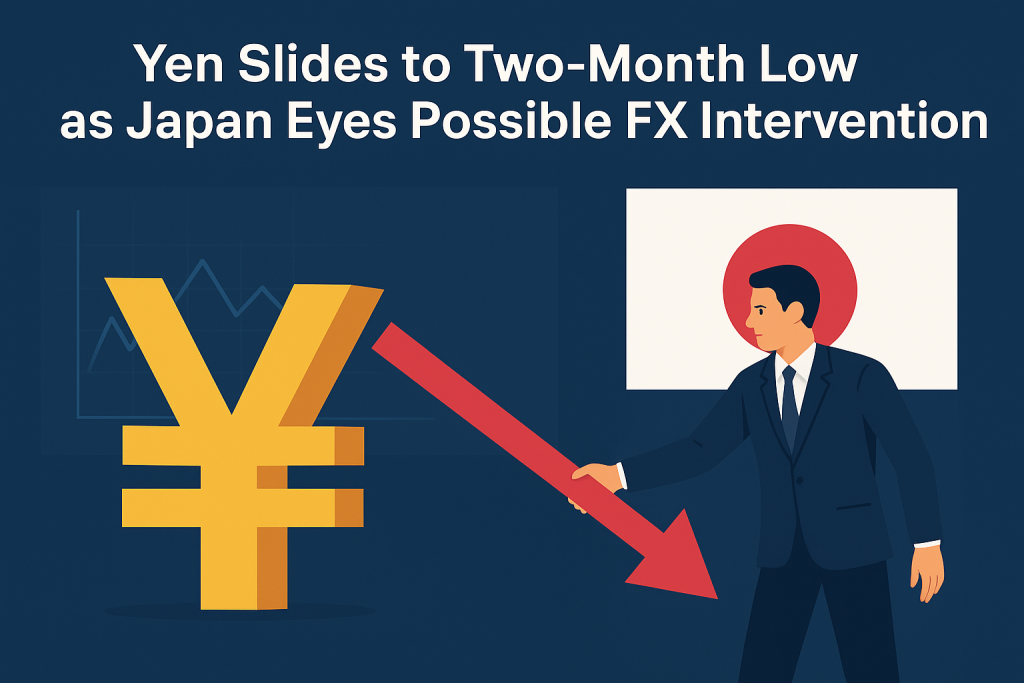The Japanese yen has once again slipped to a two-month low near ¥150 per U.S. dollar, prompting Finance Minister Katsunobu Kato to issue a strong warning against “disorderly” foreign exchange movements. The statement signals that Tokyo may be preparing to step in with direct FX intervention to stabilize the national currency.
Government on Alert
Kato’s remarks, delivered on Monday, echoed a familiar tone from Japan’s Ministry of Finance: the government is “closely watching currency moves with a high sense of urgency.” Officials have not ruled out the possibility of coordinated intervention with the Bank of Japan (BoJ) if yen depreciation accelerates further.
The yen’s weakness has been fueled by interest rate differentials — with Japan maintaining near-zero rates while the U.S. and Europe keep borrowing costs relatively high. Traders betting on the so-called carry trade continue to short the yen in favor of higher-yielding currencies and assets.
Global Ripple Effect
The yen’s slide has implications beyond traditional forex markets. As investors seek protection from fiat instability, crypto assets such as Bitcoin and Ethereum have seen increased demand in Asia. A softer yen tends to push retail and institutional investors toward alternative stores of value, especially when combined with rising inflation expectations.
Analysts note that speculative flows are increasingly bridging the FX–crypto correlation gap — a sign that digital assets are being viewed not just as high-risk bets, but as part of broader macro-hedging strategies.
“Whenever the yen weakens significantly, we often see corresponding spikes in Bitcoin trading volume in Japan and South Korea,” said a Tokyo-based market strategist. “It’s part currency hedge, part speculative play.”
If Japan intervenes, the short-term impact could be a sharp rebound in the yen, but longer-term structural pressures — including policy divergence and debt sustainability — are likely to persist. Meanwhile, crypto traders will be watching closely, as currency volatility often fuels liquidity and volatility in digital markets as well.
With macro forces driving both traditional and digital assets, the yen’s trajectory could remain one of the most influential indicators for cross-market sentiment heading into the final quarter of 2025.


